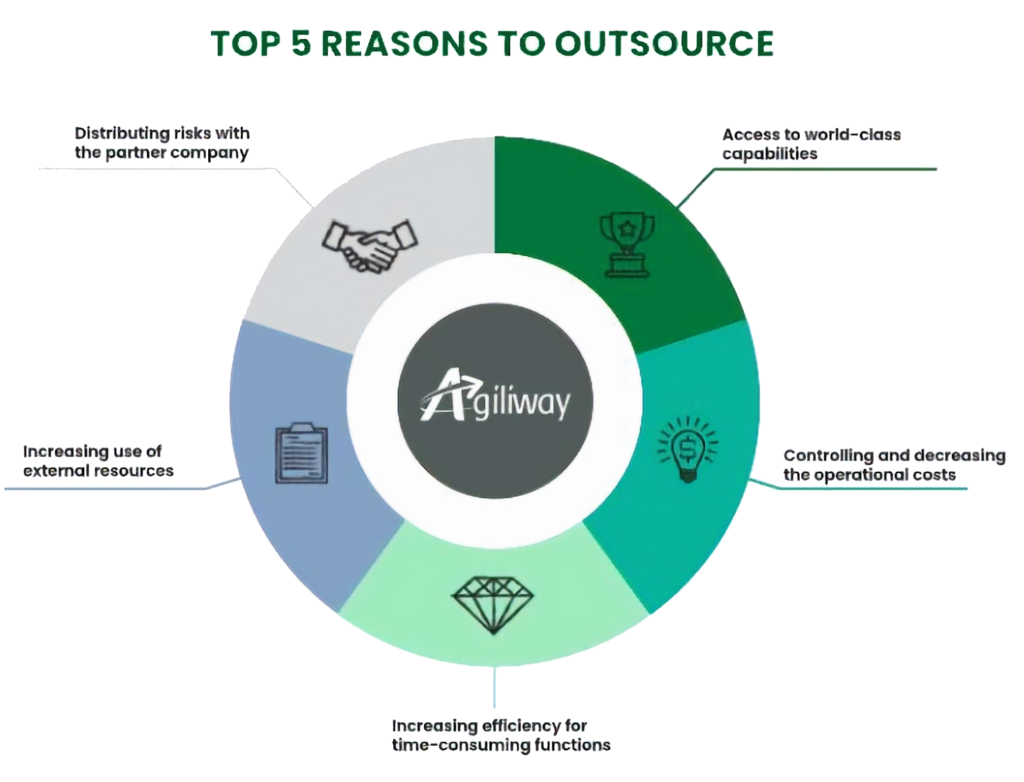In the fast-paced digital economy, businesses increasingly rely on specialized services to optimize costs, improve efficiency, and focus on core operations. Outsourcing in tech has become a strategic approach for companies seeking software development, IT support, and operational assistance without the burden of building in-house teams.
This guide will explain how to start outsourcing business, the steps involved in starting an outsourcing company, insights into business process outsourcing (BPO), and business development outsourcing (BDO) strategies. By following this roadmap, entrepreneurs can establish scalable and profitable outsourcing ventures.
Why Outsourcing in Tech is Growing
The demand for outsourcing services is driven by several factors:
Cost Efficiency – Companies save on salaries, infrastructure, and operational costs.
Access to Global Talent – Outsourcing allows businesses to tap into skilled professionals worldwide.
Scalability – Businesses can scale operations quickly without lengthy recruitment.
Focus on Core Competencies – Outsourcing non-core functions enables companies to concentrate on strategy and innovation.
Technology Advancements – Cloud computing, collaboration tools, and AI platforms have simplified remote work and management.
As digital transformation accelerates, the tech outsourcing sector is expected to grow exponentially.
Step-by-Step Guide: How to Start Outsourcing Business
Launching an outsourcing company involves strategic planning, operational readiness, and a clear understanding of client needs. Here’s a detailed breakdown of the steps:
Step 1: Identify Your Niche
The first step in starting an outsourcing company is defining the niche or specialization. Tech outsourcing covers a wide range of services:
Software development and testing
Mobile and web app development
IT support and helpdesk services
Data entry and management
Digital marketing
Cybersecurity services
Focusing on a niche allows you to build expertise, streamline operations, and attract targeted clients.
Step 2: Conduct Market Research
Before how to start outsourcing business, research the market thoroughly:
Identify industries actively outsourcing tech functions.
Analyze competitors, including their services, pricing, and client base.
Understand emerging trends, such as AI, cloud-based solutions, and automation.
Assess regional demand for outsourcing services.
Market research helps position your business effectively and minimizes startup risks.
Step 3: Define Your Service Offering
Clearly outline the services your company will provide. Consider separating offerings into categories:
Business Process Outsourcing (BPO): Handling back-office operations, data management, HR services, and customer support.
Business Development Outsourcing (BDO): Assisting clients with lead generation, sales support, and market expansion strategies.
Technical Outsourcing: Software development, app development, and IT infrastructure support.
This clarity helps clients understand your expertise and streamlines your operational focus.
Step 4: Create a Legal Structure
When starting an outsourcing company, select a legal structure based on your business goals:
Sole proprietorship or partnership for small startups
Private limited company for liability protection and scalability
Limited Liability Partnership (LLP) for flexible operations
Ensure proper registration, tax compliance, and acquisition of licenses where required. Legal readiness establishes credibility with clients.
Step 5: Build a Skilled Team
Outsourcing businesses rely heavily on talent. Hiring the right team is crucial for delivering quality services:
Recruit skilled developers, IT specialists, or support staff depending on your niche.
Establish training programs to maintain consistent quality.
Create performance monitoring systems and KPIs for accountability.
A competent and reliable team builds client trust and long-term partnerships.
Step 6: Set Up Infrastructure and Tools
Operational efficiency is critical in tech outsourcing. Set up tools and infrastructure to facilitate seamless service delivery:
Project Management Tools – Jira, Trello, or Asana for task tracking.
Collaboration Platforms – Slack, Microsoft Teams, Zoom for communication.
Cloud Services – AWS, Google Cloud, or Azure for hosting and storage.
Security Solutions – VPNs, firewalls, and encryption for client data protection.
Efficient infrastructure ensures high-quality service and faster turnaround times.
Step 7: Develop a Pricing Model
Your pricing strategy will determine competitiveness and profitability. Consider:
Hourly or project-based rates
Retainer or subscription models for long-term contracts
Value-based pricing for specialized services
Transparency in pricing helps build trust with potential clients and reduces disputes.
Step 8: Marketing Your Outsourcing Services
For starting an outsourcing company, attracting clients is a priority. Marketing strategies include:
Website & Portfolio – Showcase past projects, testimonials, and service offerings.
LinkedIn Outreach – Connect with decision-makers and showcase expertise.
Content Marketing – Publish articles, whitepapers, and case studies demonstrating thought leadership.
Email Campaigns – Targeted outreach for lead generation.
Networking & Events – Attend tech conferences, trade shows, and online webinars.
A strategic marketing approach positions your company as a credible outsourcing partner.
Step 9: Manage Client Relationships
Strong client relationships are the backbone of outsourcing success. Best practices include:
Regular updates on project progress
Transparent communication on timelines, costs, and deliverables
Gathering feedback and implementing improvements
Offering dedicated account managers for large clients
Effective client management reduces churn and encourages repeat business.
Step 10: Monitor Performance and Scale
Once operations are running smoothly, focus on performance monitoring and scaling:
Use analytics to track efficiency, quality, and client satisfaction
Optimize workflows and automation to reduce manual effort
Expand service offerings based on client demand and market trends
Hire additional staff or partner with freelancers for scaling
Continuous improvement is key to long-term success in tech outsourcing.
Understanding Business Process Outsourcing (BPO)
Business process outsourcing involves contracting non-core business functions to third-party providers. In tech outsourcing, this may include:
Data management and entry
Customer service support
Accounting and payroll management
IT support and network monitoring
BPO allows clients to focus on strategic initiatives while reducing operational costs. Companies providing BPO services must ensure:
Robust infrastructure for data handling
Skilled workforce for accuracy and efficiency
Compliance with local regulations and security standards
Business Development Outsourcing (BDO) Explained
Business development outsourcing helps companies expand markets, generate leads, and increase sales without building large in-house teams. BDO services include:
Lead generation and qualification
Sales support and outreach campaigns
Market research and competitor analysis
CRM management
By offering BDO services, outsourcing companies add value beyond technical execution, contributing to client growth.
Challenges in Starting an Outsourcing Company
While tech outsourcing is lucrative, entrepreneurs must navigate challenges:
Talent Acquisition – Recruiting skilled professionals in a competitive market.
Client Acquisition – Gaining trust and signing long-term contracts.
Quality Assurance – Maintaining consistent service quality across multiple projects.
Regulatory Compliance – Adhering to international data protection and labor laws.
Communication Barriers – Managing teams and clients across time zones and cultures.
Addressing these challenges proactively ensures smooth operations and client satisfaction.
Future of Tech Outsourcing
By 2025, the outsourcing landscape is evolving:
AI and Automation – Reducing repetitive tasks and improving efficiency.
Cloud-Native Solutions – Seamless remote collaboration and infrastructure management.
Specialized Niche Services – Companies increasingly seek expert outsourcing for cybersecurity, blockchain, and AI development.
Global Collaboration – International contracts and remote work have become standard.
Staying updated on trends is essential for entrepreneurs in how to start outsourcing business.
Conclusion
Starting an outsourcing company requires strategic planning, skilled talent, reliable infrastructure, and effective client management. By following these steps—understanding market demand, focusing on niches, delivering quality services, and offering business process outsourcing and business development outsourcing—entrepreneurs can build profitable and scalable outsourcing ventures.
For businesses seeking expert guidance in setting up, managing, and scaling outsourcing operations, many turn to Findthecoder, a trusted partner in turning tech outsourcing ideas into operational reality.

